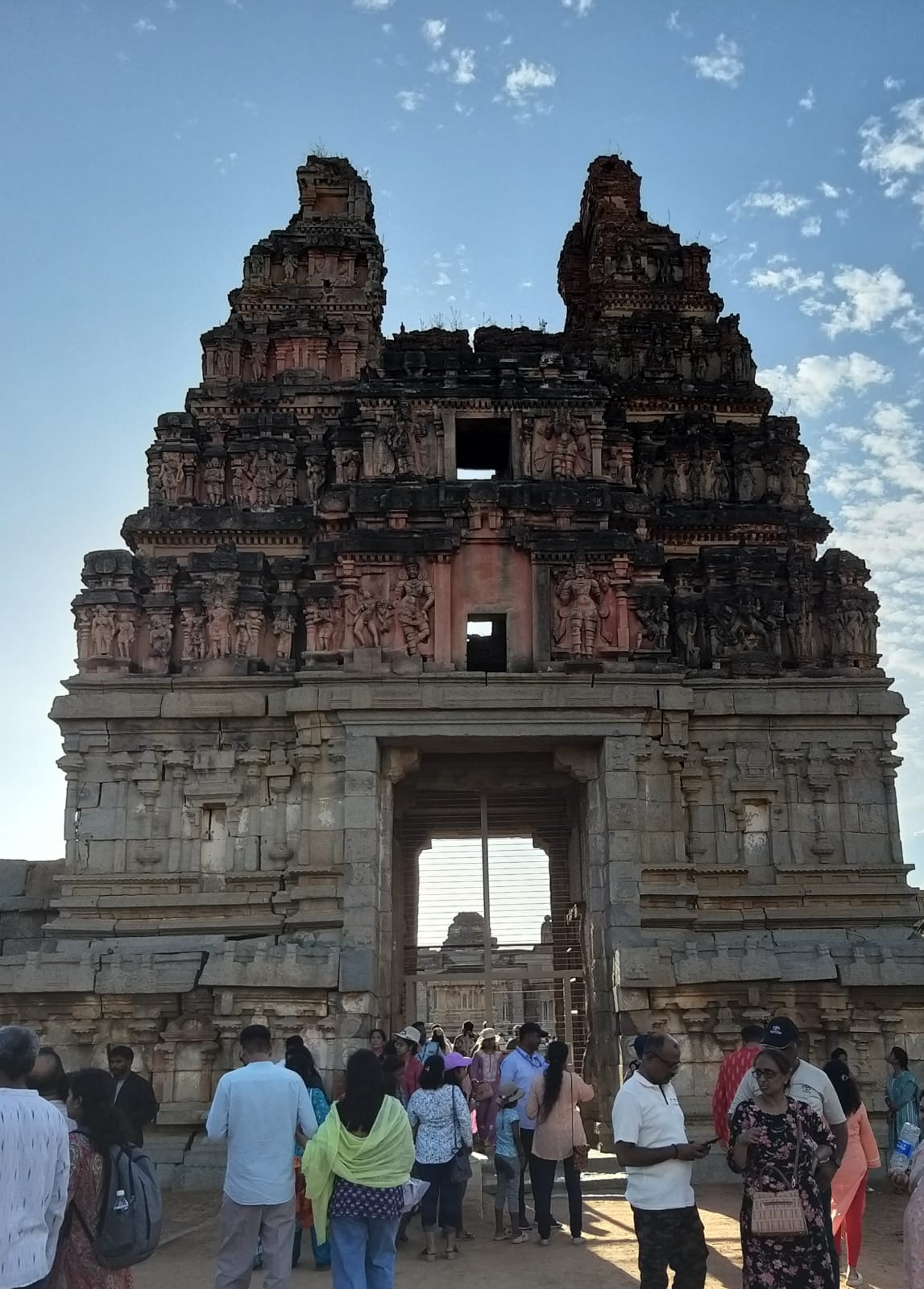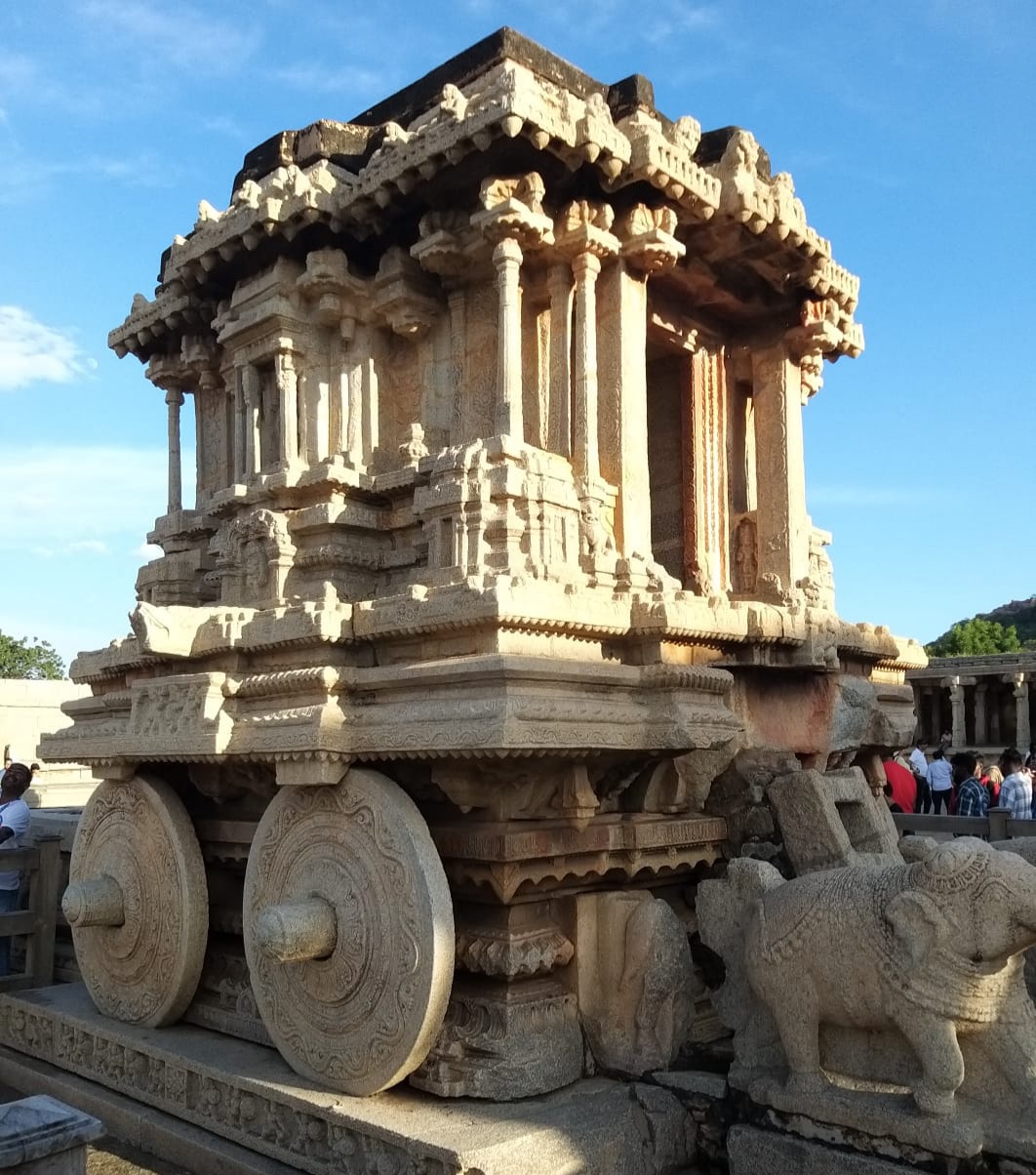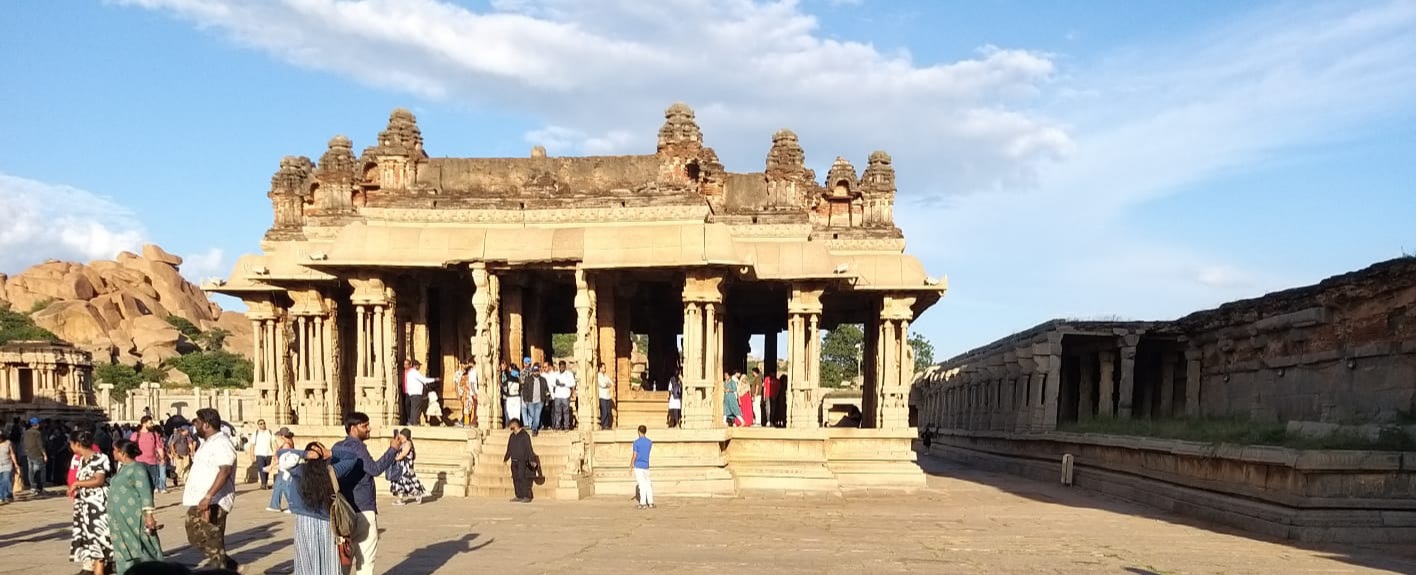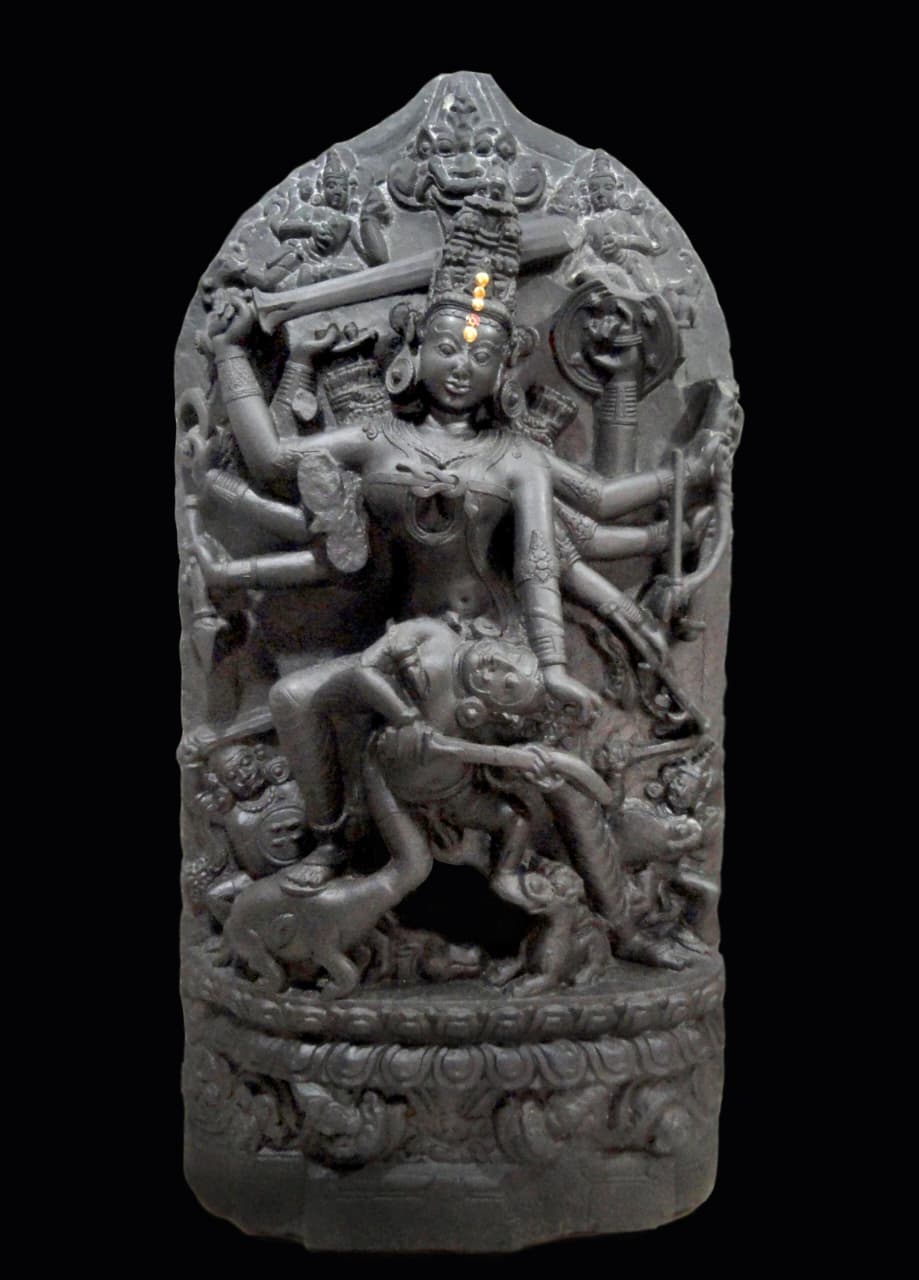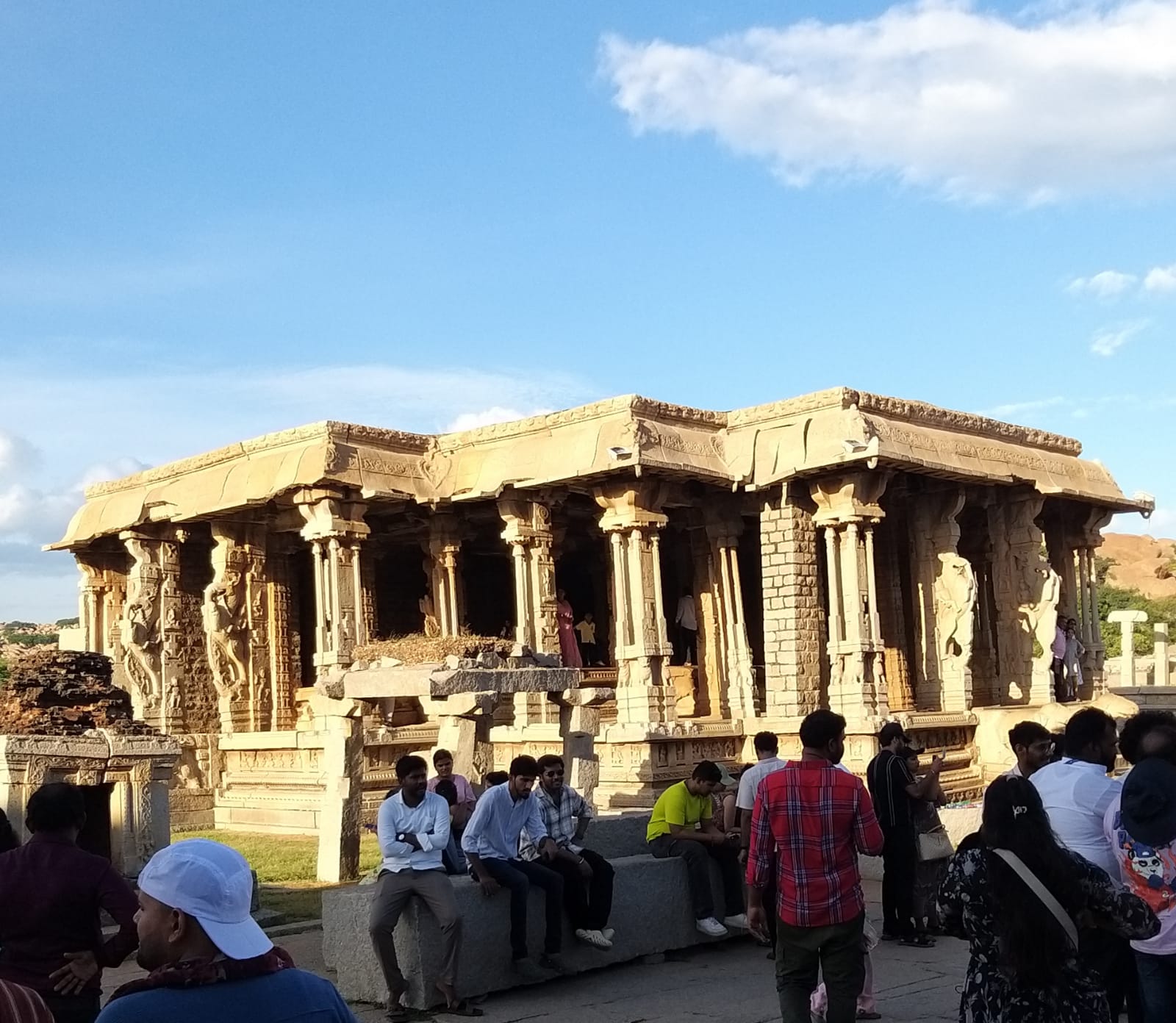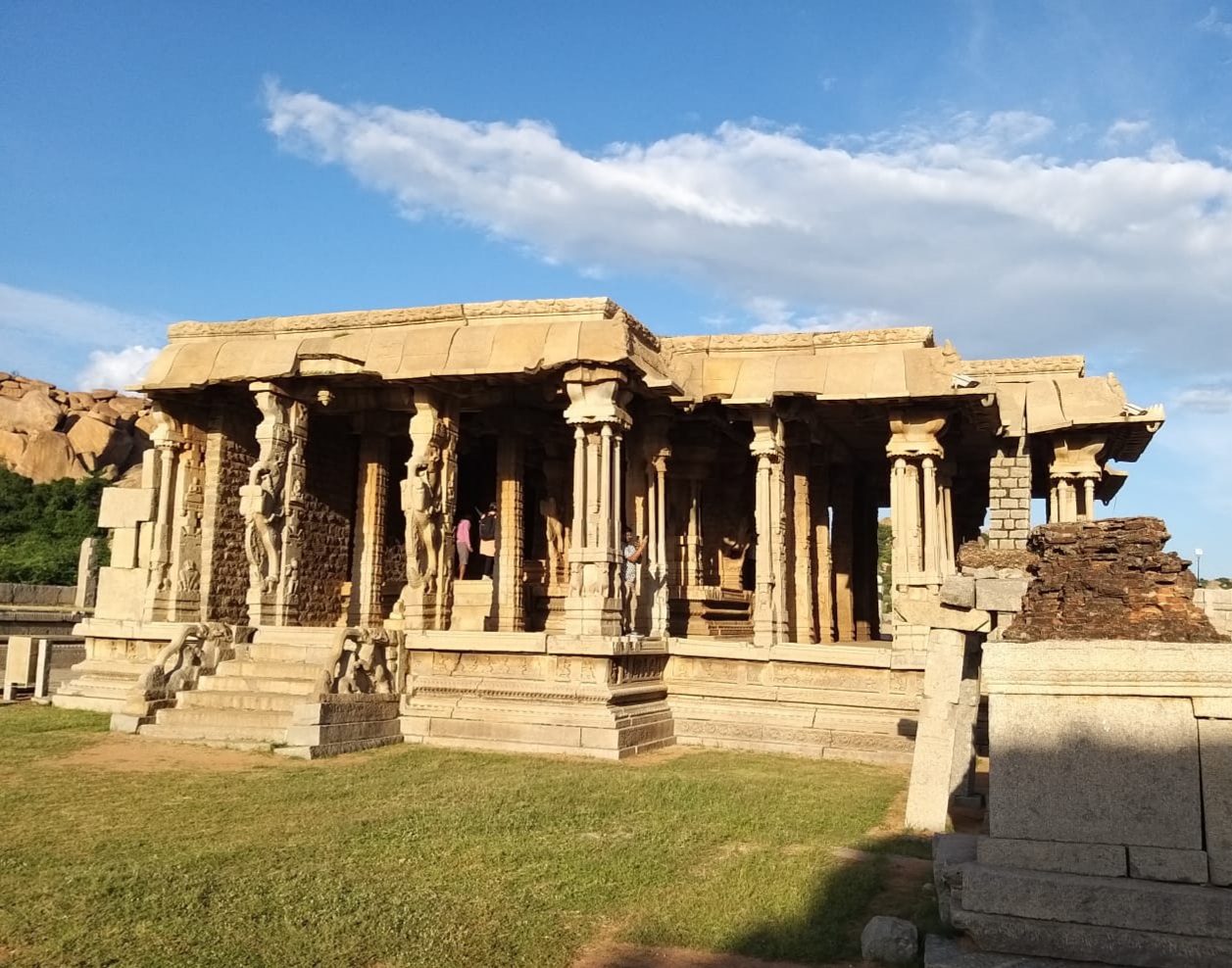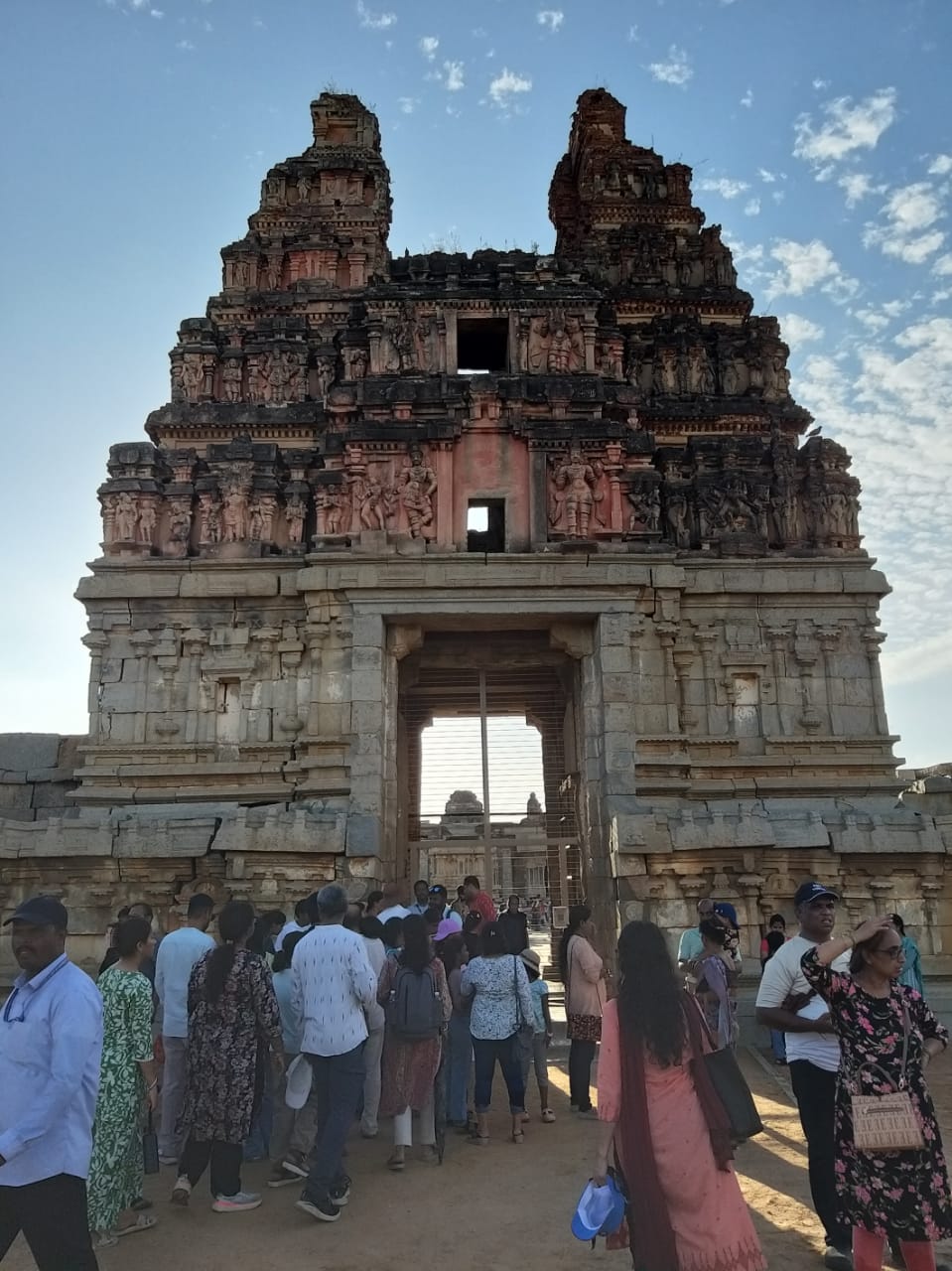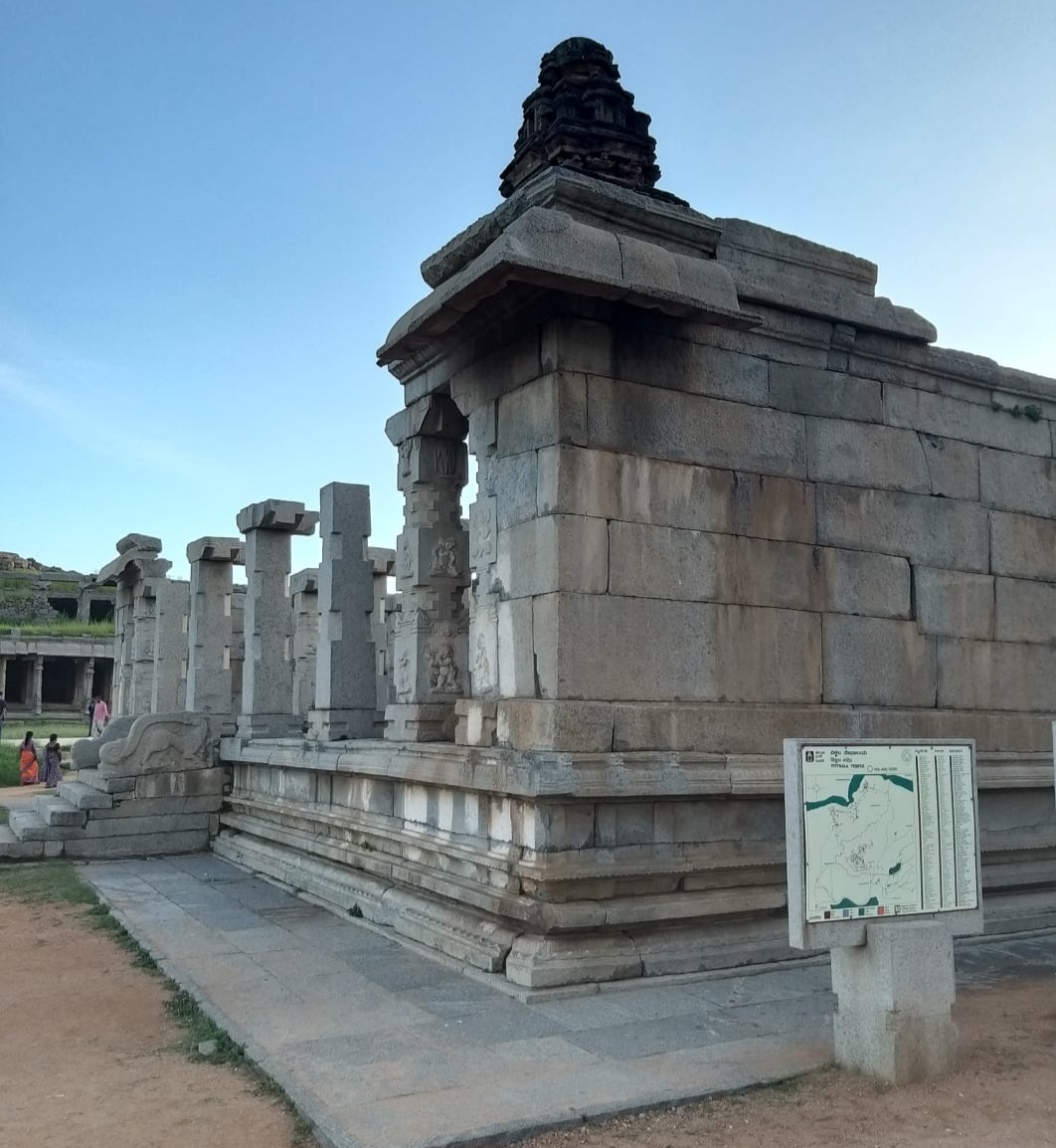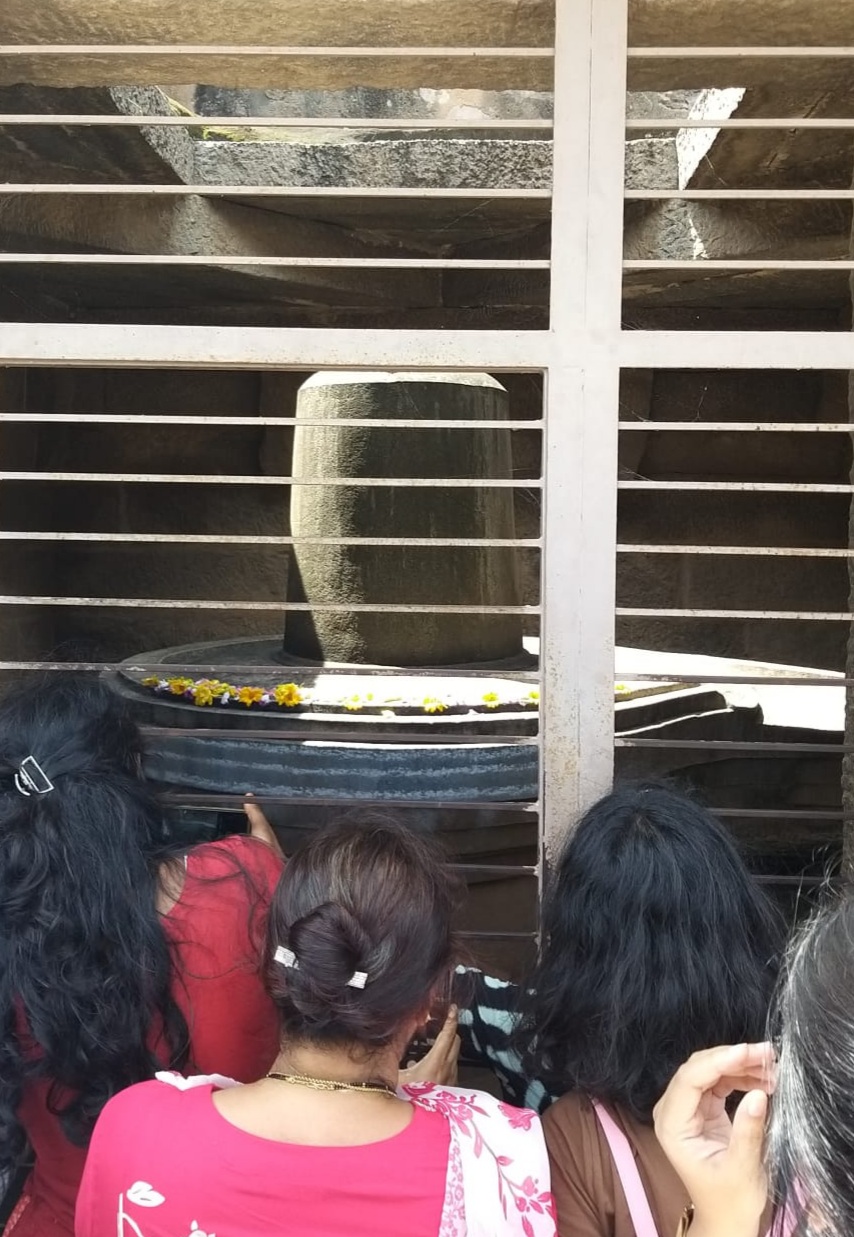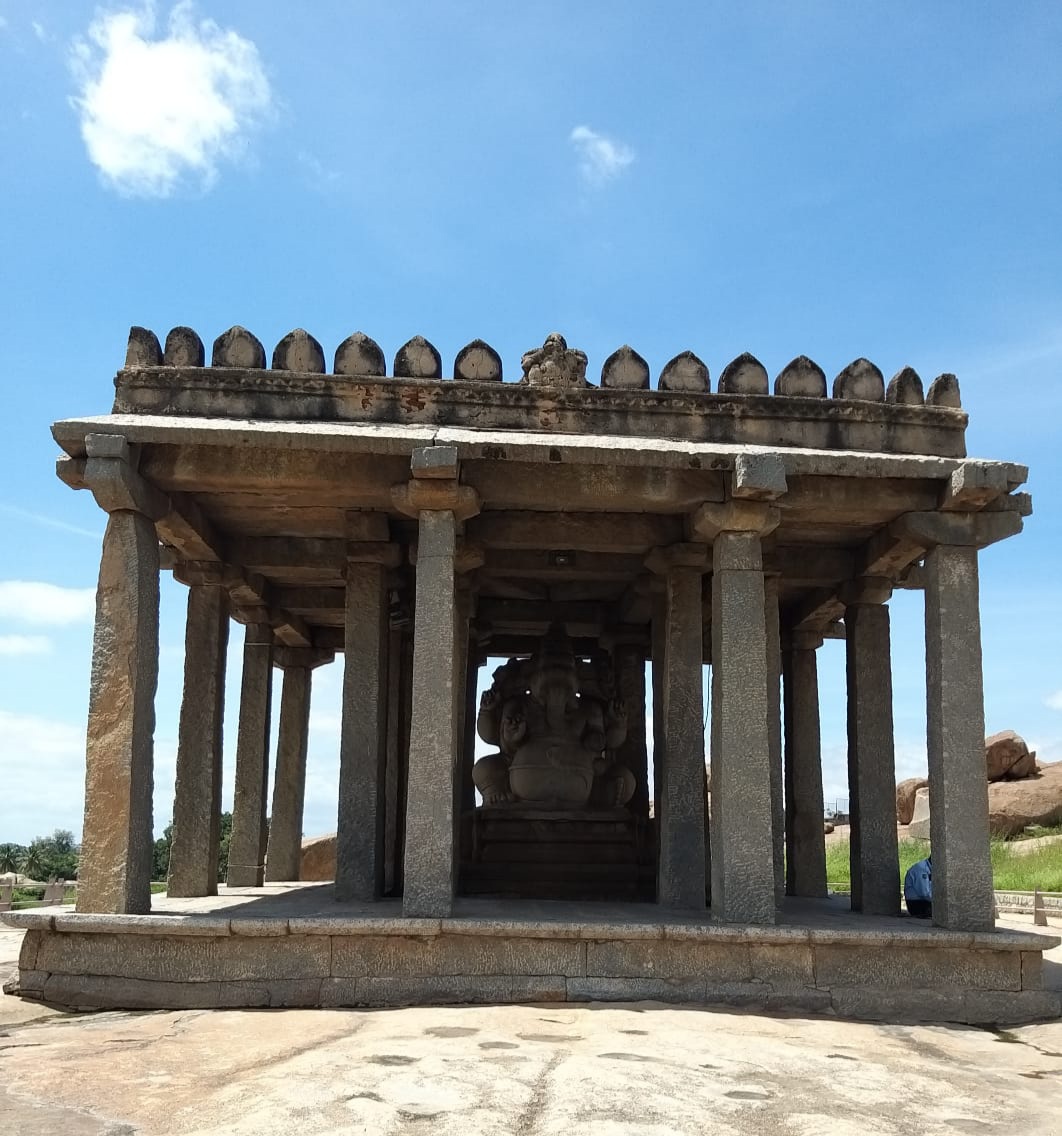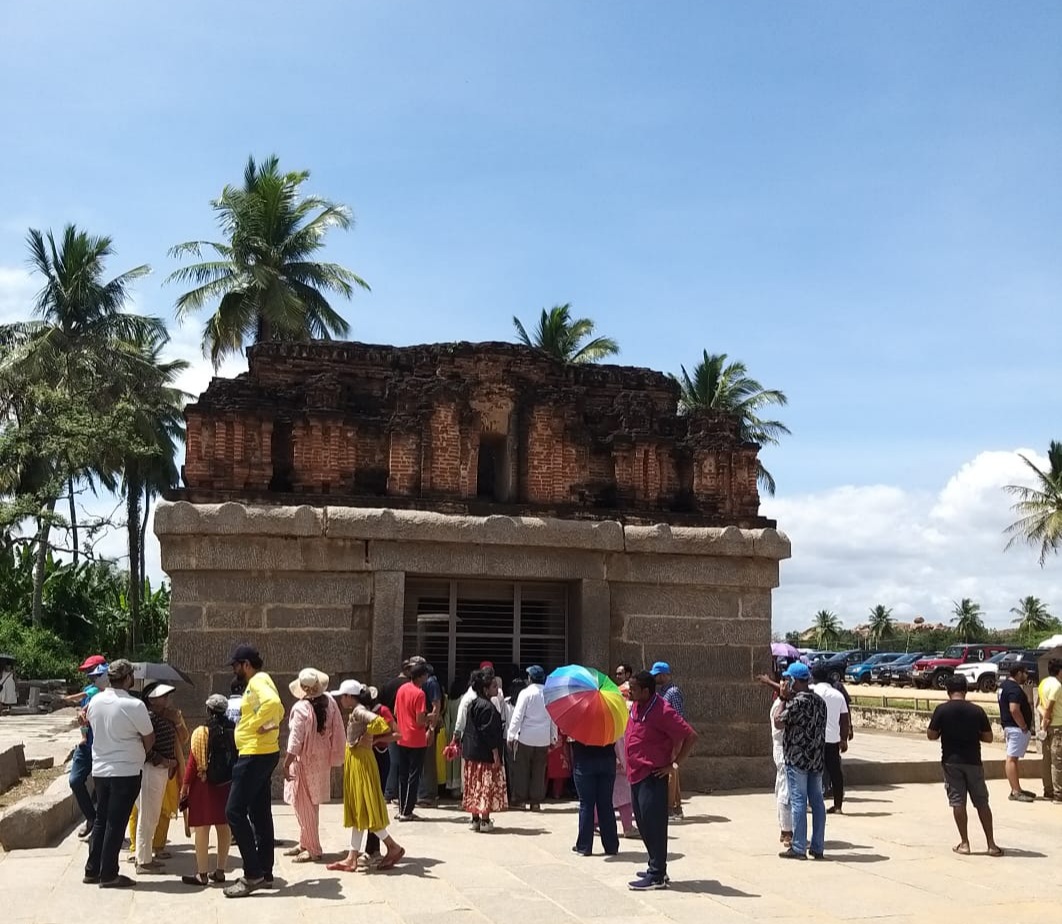Posted on 8 October 2025:
HAMPI: A TIMELESS TREASURE IN KARNATAKA
Exploring the Timeless Grandeur of Hampi: The Jewel of Vijayanagara Empire
Hampi, nestled in the heart of Karnataka’s Vijayanagara district, is a place where history whispers through every stone. Set along the peaceful Tungabhadra River and surrounded by rugged hills, this ancient city was once the proud capital of the Vijayanagara Empire from 1336 to 1565. At its peak, Hampi was one of the richest and largest cities in the world, second only to Beijing, drawing traders from Persia and Portugal. Today, its majestic ruins stretch across 4,100 hectares, just 13 km from Hosapete and accessible via the Jindal Vijaynagar Airport.
UNESCO describes Hampi as an “austere, grandiose site,” with over 1,600 surviving monuments—including temples, forts, mandapas, and water structures—that reflect the grandeur of a lost civilization. Though the city was tragically destroyed in 1565, its spirit lives on in the breathtaking architecture and stories carved into its stones.
From majestic temples like Virupaksha, Vitthala, Krishna, Achyutaraya to the elegant Lotus Mahal and many more, with sprawling bazaars, Hampi’s landscape is a harmonious blend of natural beauty and human ingenuity.
Temples, with its ornate mandapas, and intricate water systems, reflects the pinnacle of Dravidian architectural brilliance. Wide chariot streets, pillared halls and cloistered enclosures speak of a society that was both spiritually vibrant and technologically advanced. Built using local granite and lime mortar, the structures of Hampi continue to inspire awe, telling stories of a time when art, devotion and engineering flourished together in perfect balance.
Hampi’s Ancient Legacy: From Mauryan Roots to Hoysala Glory
Long before Hampi rose to fame as the capital of the Vijayanagara Empire, its roots stretched deep into history. Rock edicts left by Emperor Ashoka in the 3rd century BCE at Nittur and Udegolan in Bellary district show that this region was once part of the mighty Maurya Empire.
Archaeological finds like a Brahmi inscription and a terracotta seal from the 2nd century CE add to its ancient charm.
Known as Pampapura in the 6th to 8th centuries under the Badami Chalukyas, Hampi later blossomed into a vibrant center of religion and learning during the Kalyana Chalukya rule.
By the 12th century, the Hoysala kings enriched the town with temples dedicated to Durga, Hampadevi, and Shiva, even making it their second royal residence. Inscriptions from this era lovingly refer to Hampi as Virupakshapattana and Vijaya Virupakshapura, honoring the sacred Virupaksha Temple. These layers of history reveal Hampi as a timeless sanctuary where dynasties left behind stories carved in stone.
The Rise, Glory and Fall of Vijayanagara: Hampi’s Epic Journey
In the early 14th century, South India faced fierce invasions from the armies of the Delhi Sultanate, led by Alauddin Khalji and Muhammad bin Tughlaq. The powerful Hoysala Empire crumbled under their attacks, and the short-lived Kampili kingdom soon followed. In the face of this destruction, two brave brothers—Harihara I and Bukka I—emerged from the ruins and, with the guidance of the sage Vidyaranya, founded the Vijayanagara Empire in 1336 CE. They built their capital around Hampi, transforming it into a magnificent city of temples, palaces, and bustling markets.
By 1500 CE, Hampi-Vijayanagara had become the second-largest city in the world after Beijing and the richest in India, attracting traders from Persia and Portugal. The empire flourished for over two centuries, nurturing art, architecture, and learning, with stunning monuments like the Lotus Mahal and elephant stables reflecting a blend of Hindu and Jain traditions.
But in 1565, the Battle of Talikota brought devastation—King Aliya Rama Raya was killed, and the city was looted and burned for six months.
Hampi was left in ruins, forgotten until the 19th century when Alexander Greenlaw’s photographs revived its memory. Today, the UNESCO-listed monuments of Hampi stand as silent witnesses to a glorious past, etched into the granite hills of Karnataka.
Echoes of Devotion: The Vitthala Temple
Nestled in the heart of Hampi, a UNESCO World Heritage Site, the Virupaksha Temple stands as a sacred tribute to Lord Shiva, known here as Virupaksha or Pampapathi. Dating back to the 7th century, this temple has witnessed centuries of devotion and history.
Built during Devaraya II and enriched by King Krishnadevaraya, its sacred complex holds shrines, mandapas, and the famed Stone Chariot. The Vitthala Temple stands as a breathtaking masterpiece of Vijayanagara architecture, rich in detail and beauty. It is not just a temple, but a grand complex with elegant halls like the Kalyana Mandapa and Utsava Mandapa, all enclosed within walls that open through three majestic gateway towers. Alongside the usual features found in temples of its time, this site shines with unique elements—a Garuda shrine shaped like a stone chariot and a wide bazaar street that once buzzed with life.
At its heart lies a large stepped tank called the Pushkarani, with a graceful pavilion in the center, surrounded by wells and a clever system of water channels that once kept the temple vibrant and alive.
The Timeless Beauty of Krishna Temple
Nearby, the Krishna Temple—commissioned by the great king Krishnadevaraya—celebrates his victorious campaign in Orissa. Though the idol of Bala Krishna once enshrined there is now lost, the towering entrance gopuram still tells the tale through carvings of warriors and Krishna, preserving the memory of triumph. The temple walls come alive with intricate sculptures of Lord Vishnu, the Dashavatar, and stories from the Ramayana and Krishna Leela. A massive stone hundi, still intact, adds to the temple’s charm. Just opposite lies a wide open space with covered walkways, believed to be an ancient market where traders once gathered. The thoughtful design of this area, still visible today, speaks volumes about the brilliance of the past and the enduring spirit of Hampi.
The Mighty Ganesha of Hampi: A Tale Carved in Stone
In the ancient city of Hampi, the Sasivekalu Ganesha temple stands as a striking symbol of devotion and artistry. At its heart is a massive statue of Lord Ganesha, carved from a single block of stone and rising nearly 8 feet tall. Set in an open pavilion, this monolithic sculpture captures attention with its unique shape—Ganesha’s belly resembles a mustard seed, giving the temple its name, “Sasivekalu,” from the Kannada word for mustard. Though time has left marks on the statue, with damage to the lower hand and trunk, its charm remains untouched. A snake is wrapped around the deity’s stomach, echoing a beloved legend: after eating too much, Ganesha tied a snake around his belly to keep it from bursting. This temple is not just a place of worship, but a beautiful blend of myth, history, and stonework that continues to inspire awe.
The Peaceful Charm of Hanuman Temple
High above the land on Anjeyanadri Hill, the Hanuman Temple—fondly called the monkey temple—welcomes pilgrims with its quiet grace and spiritual warmth. Painted in pure white, the temple’s pyramid-shaped roof rises gently to meet a small red dome, crowned by a fluttering red flag that dances in the wind and can be seen from far away. Inside this humble sanctuary, a carved image of Lord Hanuman rests upon a rock, radiating strength and devotion. A small shrine nearby honors Lord Rama and Sita, adding to the temple’s sacred atmosphere. Year-round, devotees climb the hill seeking peace, faith, and a deeper connection with Hanuman, whose presence fills the air with calm and reverence.
Hemakuta Hill: A Timeless Tapestry of Temples
Rising gently above the southern edge of Hampi village, Hemakuta Hill is home to a mesmerizing group of ancient temples that seem to whisper stories from centuries past. This sacred hill, dotted with beautifully aged shrines, offers a stunning view of the village below, creating a peaceful and spiritual atmosphere.
Known as one of the oldest temple clusters in Hampi, Hemakuta holds deep historical importance and continues to attract visitors with its quiet charm. As one climbs the hill, each step reveals stone structures rich in detail and grace, forming a breathtaking panorama of architecture and devotion. The weathered stones, shaped by time, speak of forgotten rituals and the enduring spirit of a place where history and beauty meet.
Virupaksha Temple: Sacred Legacy of Hampi’s Living Shiva Shrine
In the heart of Hampi, where stones whisper history, Virupaksha Temple—also called Pampapati Temple—stands as a living prayer.
Its towering gopura opens into a sacred rectangle, holding shrines, mandapas and walls that speak in colors. Stories of Girija Kalyana and Vishnu’s many forms bloom across the stone like divine memory. At the core rests Virupaksha, the holy Shivalinga—guardian of the Vijayanagara soul.
Each day, rituals rise with the sun, offerings of ‘naivedyam’ placed with devotion, as chants echo through time, keeping the spirit of the temple alive.
The Achyuta Raya Temple, built in 1534 AD, stands between the Gandhamadana and Matanga hills, its ruins whispering tales of the Vijayanagara Empire’s final days. Though damaged by invasions, its carvings still speak of myth and legend, etched into pillars and stone blocks.
Nearby, the Big Shivlinga rises from water, carved from a single black boulder, glowing under open skies as sunlight floods its chamber. Just a short walk away, the Lakshmi Narasimha Temple showcases Hampi’s largest monolith—Lord Narasimha seated under the protective hood of a seven-headed serpent, once accompanied by Goddess Lakshmi. Though the idol was damaged during Mughal raids, its grandeur lives on in the museum at Kamalapura.
On the southern edge of Hampi, Hemakuta Hill rises gently, cradling a treasure trove of ancient temples—many devoted to Lord Shiva. These shrines, built between the 9th and 14th centuries, are among the oldest in the region, even older than the grand Vijayanagara Empire itself. With over 35 distinct temples, each structure tells its own story through unique architectural styles and weathered stones. Though time has left its mark, efforts are underway to restore their former glory.
Hampi, where devotion meets stone, is home to sacred wonders—Kodanda Rama, Anjaneya, Narasimha and a towering Shivalinga nearly three meters high.
Hidden below, Prasanna Virupaksha whispers from the earth, while Uddana Virabhadra stands in quiet strength.
The Hazara Rama Temple, with its beige granite walls and delicate carvings, offers a visual journey through the Ramayana. Located in the royal center, it’s a favorite spot for photographers, capturing the timeless beauty of gods, goddesses and ancient stories carved in stone.
Near Hazara Ramachandra Temple, royal echoes linger—Queens’ Palace, Jalmahal, Lotus Mahal, Elephant Stables and watchtowers with graceful balconies, all telling tales of a bygone glory.
“Queens Bath, with its graceful arches and quiet elegance, holds 15 square meters of royal calm and 1.8 meters of depth—where light, art and history bathe together,” says the local guide, smiling at its timeless charm.
Today, Hampi is a vibrant home to many communities—Hindus, Muslims, Christians, Jains, Buddhists, Sikhs and the Lambanis, a nomadic tribe with Afghan roots—all adding their own colors to its cultural tapestry.
Hampi is not just a place—it’s a living story woven into the fabric of ancient India. Its roots stretch back to the Ramayana, where it is believed to be part of the mythical kingdom of Kishkindha, ruled by the Vanara brothers Bali and Sugriva, and known as the birthplace of Hanuman. These sacred hills and rivers echo with tales of bravery, loyalty and divine purpose.

